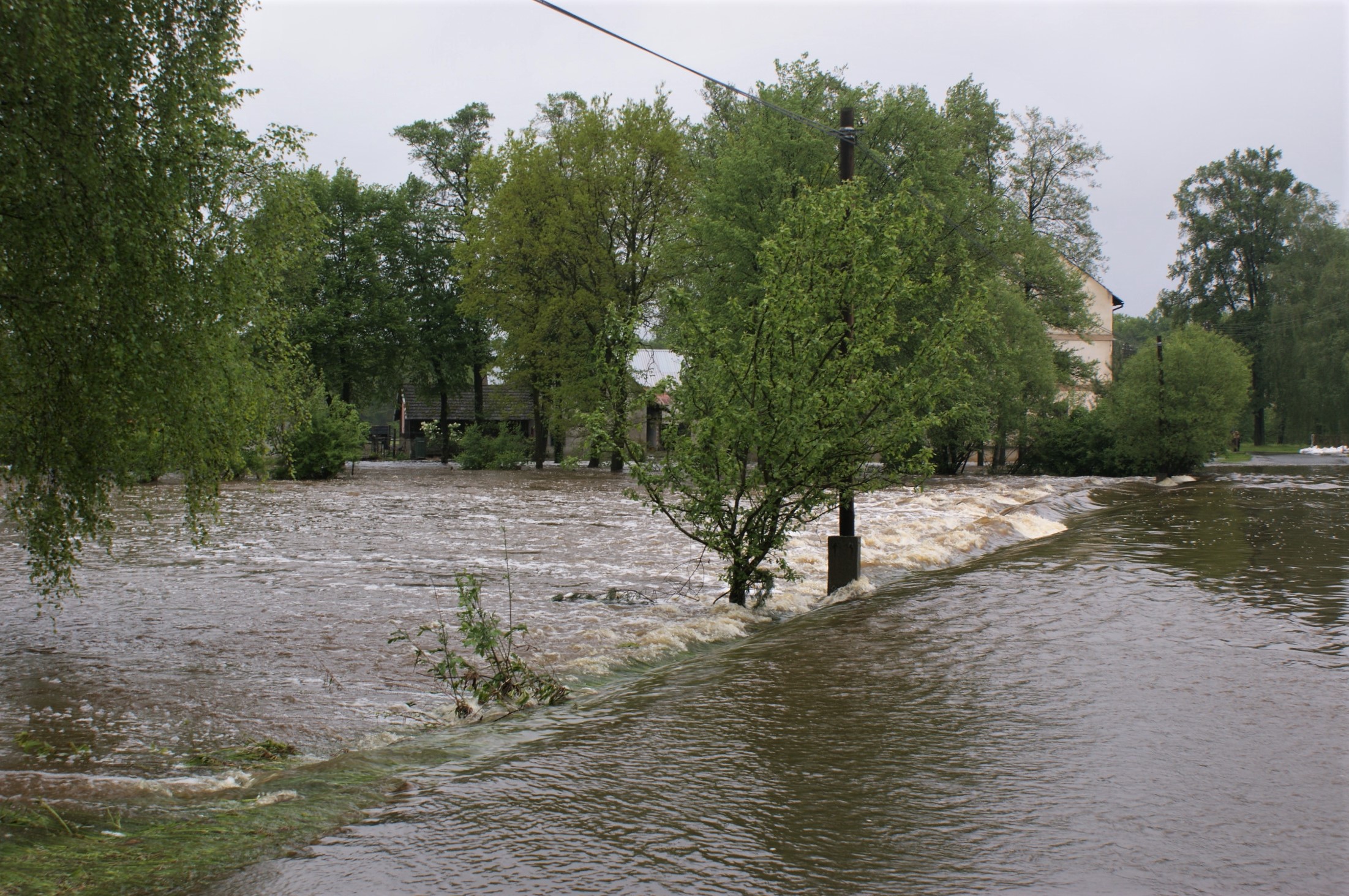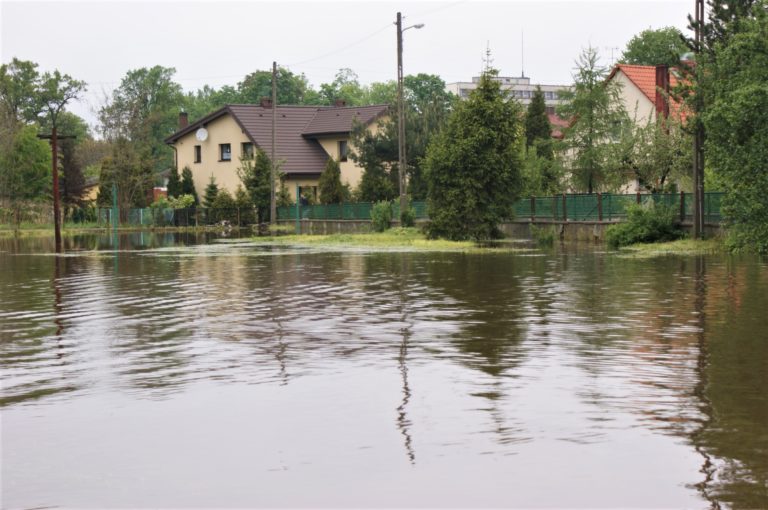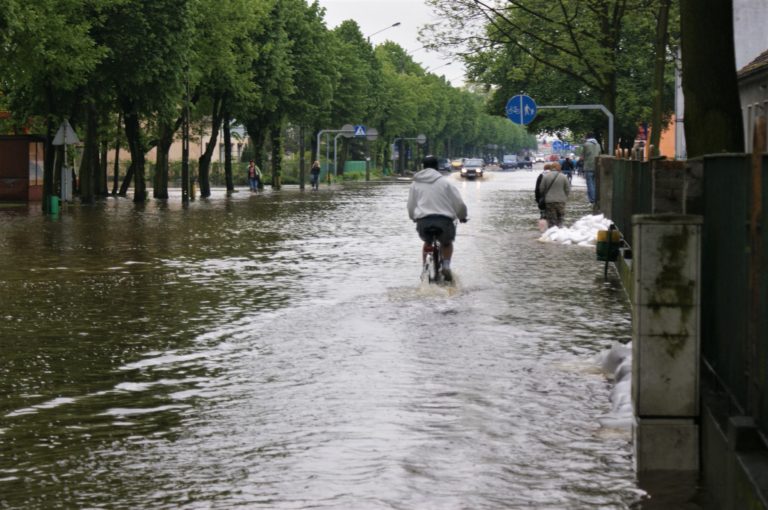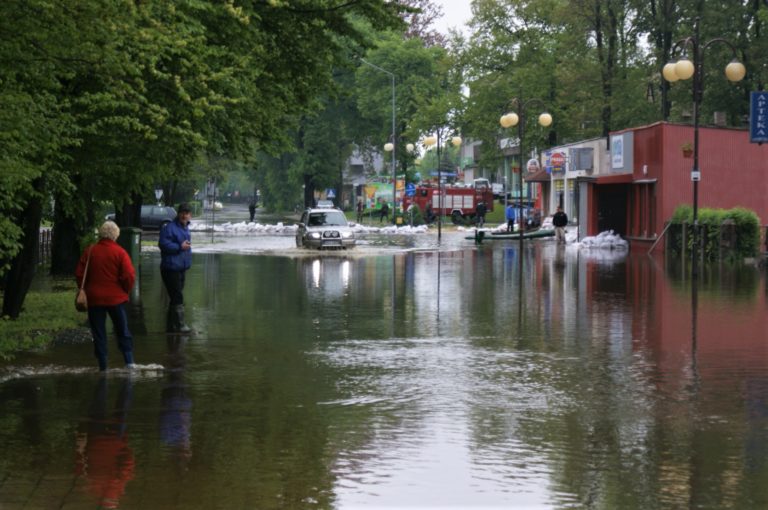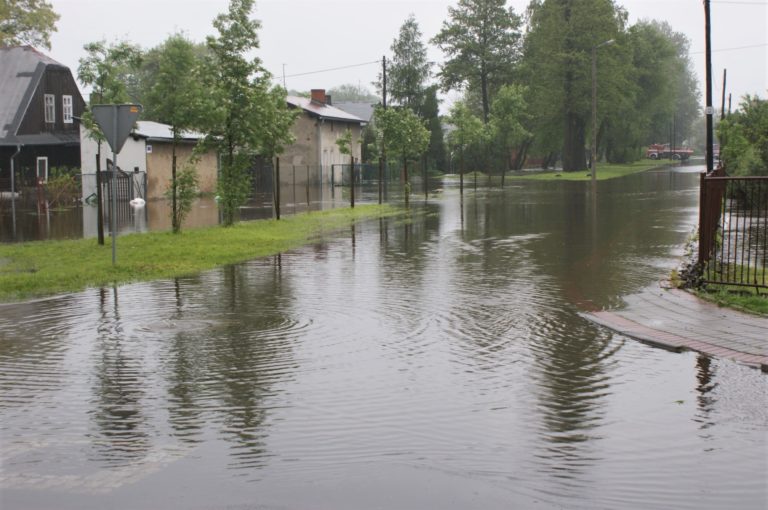There used to be two floods here for a year – after winter, when the snow was melting, and then a second time, for the harvest. – I remember how sheaves and hay were tied in the fields, how the water took them with it. And we, as children, sat on the hill and watched it all flow. Three days, the water broke and there was no more flooding – says Alfred Thiel, a farmer from the Opole region. This time it was different. It was the biggest flood he could remember. It flooded the fields and meadows. It cut off his farm from the world.
The procedures were prepared. Dikes, drainage and canals as well. Theoretically. And then the great water came and verified everything. – It was May, it rained quite heavily. We were aware that the water in the river was increasing. Already then, we took appropriate actions, a group related to crisis management was established, we had procedures in place. Theoretically, we were prepared for the flood. However, its strength and scale were so great … We were surprised by this wave, this high water … – recalls Mariusz Stachowski, mayor of the Zawadzkie commune (Silesian District).
When the flood wave reached the Zawadzkie commune on May 18, 2010, the services were ready. Two days earlier, firefighters were strengthening the embankments in Mała Panew, however it wasn’t enough. The amount of water in the river was increasing at an alarming rate – 10 cm for 15 minutes – reaching a height of 4.5 m and almost exceeding the emergency level twice. The water poured out on the surrounding fields and meadows, and began to break into other towns: Kielcza, Żędowice, Zawadzki. There was no such water level even in 1997.
The flood that passed through Poland in 2010 was the largest in the history of measurements (i.e. in the last 160 years). In mid-May, after heavy rainfall in the south of the country, rivers rose in the basin of the Vistula and Odra, crossing the emergency levels and flooding 15 provinces. Two waves then swept through Poland: in May (14-26) and in the first half of June. At that time, 30,000 people were evacuated across the country. people, over 550 thousand ha. of arable land were under the water. The losses were estimated at nearly 12 billion PLN.
It’s been 10 years now, but the survivors are still feeling the losses they suffered at that time. They still perfectly remember the events of those days, these emotions, fear for themselves, their relatives and their belongings. Still, when the water in the nearby river increases, they feel uneasy.
Rivers have their memories
The water on Mała Panew has long been accumulated at the Thiel Mill in Żędowice. From this point, the Metallurgical Channel runs parallel to the riverbed, which flows into the Steelworks Pond in Zawadzki.
– That’s where I have my meadows – says Jerzy Koronczok, a farmer from Żędowice. – About halfway through my meadows, looking at the shoreline of the river, a fairly large tree had been fallen for years. I have intervened many times in this matter. I knew it was a big threat. About 2/3 of the river width was blocked by them. It’s a kind of dam that also caught and kept all the “rubbish” – he explains.
The interventions, however, didn’t help – the tree remained in the river. And that was the first element that contributed to the tragedy. When the flood wave came, the water filled the bed, it started to pile up on this tree and, looking for a way out, it chose the well-known oxbow lakes that run between the current bed and the Metallurgical Channel.
– Knowing this route – the old basins of Mała Panew – I took a risk and walked along my irrigation channels some 200 meters upstream, towards the Thiel Mill. The water was already very rushing in some places, but still held in the trough. So, the fallen tree was a critical point. There the river returned to its oxbow lake. Because rivers have their memories – explains Jerzy Koronczok – But there was so much water that it also burst through my meadow – he adds.
¾ municipalities under water
The water was rapidly moving towards the Hutniczy Canal. Along the way, it encountered a flood embankment, but it wasn’t a big obstacle for it. It quickly found the weakest place in embankment. Through the Hutniczy Canal, the wave reached the Steel Pond and in the blink of an eye began to pour into it. The channels draining water from it didn’t have enough capacity.
– At 8:17 pm I made an emergency. I got the entire crisis management team and all my employees on my feet. It was a matter of minutes. At successive water gauges at Mała Panew, the water level was getting higher and higher every minute. But we couldn’t do anything else, there was too much water. It flowed into the pond and then there were technical problems. Whenever water arrives at a “normal” rate, it flows in and out of the pond without spilling out. However, not this time. Its number was so large … The city and ¾ of our commune were flooded – says Mariusz Stachowski.
However, Zawadzkie was flooded from a completely unexpected side. Nobody expected that the water from Mała Panew would get into the canal. It was supposed to spread onto the surrounding meadows and fields, not to reach the city. – Shortly before the flood, I obtained funds to create a tourist center here, which was, among others, canoe rental. And when this great water came, I remember how today, when a kayak was flowing in the middle of Zawadzki – recalls Mariusz Stachowiak
– It all happened so fast … Water flowed through the city, the steelworks and then, as if nothing had happened, it returned to Mała Panew , adds Jerzy Koronczok.
Many months of toil – in vain
Great water for farmers isn’t only flooded houses and farms. There are also destroyed fields and, at the same time, the effects of several months of work, time, costs and energy put into them. This is a huge loss in their workplace. Not only does the farmer invest money for several months in fertilizers, care, cultivation and protection treatments, seeds, pesticides, etc., but after such a disaster one has to bear the costs of clearing the field, restoring the crop if possible, and in the worst case – write everything off and get ready for new investments next season. And until then, you have to live on something.
– I have 2 hectares of field there, the rest are meadows. Everything was flooded. On the farm, in the yard, it was 40 cm. water, we couldn’t walk to the road normally. The basement in the house was flooded, the boiler room and the barn as well. We took the hens to a neighbor – says Alfred Thiel. – The water went down this way for a week. Life was supposed to be normal, but you couldn’t go to the store, for example, because everything was flooded. We were cut off from the village for a few days – he adds.
In the area of Mała Panew, water stagnation has appeared. The water came quickly, but it didn’t go away that quickly. The harvest had to be written off. It is true that farmers could apply for compensation, but they didn’t cover the damage they suffered.
– In my meadows, the swath was damaged, sand-covered, there were roots, branches and garbage everywhere. In addition, there were holes in the ground along the lines that were created by the wave looking for an outlet. We had to fill them up later. And they were quite large – about 6-7 meters wide by about 2 meters deep. No wonder, the force of the element was enormous – about 60-70 cubic meters of water per second flowed through my meadow – recalls Jerzy Koronczok. – Of course, it was also necessary to do nursing crops in this area again, to sow with a special seeder. These are high costs. The following meadows were also flooded, and access to them was also difficult … – he says.
Memories are alive, and so are fear
– For me, the flood is nothing new, I have experienced them a bit. They were already smaller, they were bigger … but this one in 2010 was the largest – emphasizes Mr. Thiel. – Fortunately, there were no major losses on the farm, nothing was wrenched on the way – because we have everything secured. My father told me that when a wave once came, and on average every hundred years there is such a serious flood here, it wrecked half the house. It was then that this pond was created here – he recalls.
Everyone remembers the flood from 10 years ago. And since then, they look at “their” beautiful river differently. With much greater respect, but also with distrust. They try to secure in advance, anticipate, prepare for the possible “worst” that may come at any moment.
– I have been taking care of the river for a long time – a kilometer earlier I pulled out all the trees from the river so that the flow is free. Water has its strength, and when you leave such branches or trunks, the wave can take them with you later. All this goes with the current until it hits an obstacle, the water then piles up, breaks bridges … This element is powerful, if we respect it, clean the riverbeds, floods will occur, yes, they will, but they will pass quickly and will not cause such huge damage – he notes Alfred Thiel.
The mayor of the Zawadzkie commune, taught by experience, is also better prepared. All weirs are inspected in the commune once a month, regardless of the weather. They are lubricated, painted, and the plates are marked with them. The water level is also always examined. The commune is also trying to clean the drainage ditches and make them clear. Together with the Regional Water Management Board and the Water Basin Board in Opole, the weir was secured, which failed in 2010 and through which water got to Żędowice.
But with every major rainfall, memories come back. The red light comes on. – We immediately check the water level on the river and the forecasts. I also always send information about the readiness to everyone. We already have our scheme, our procedures – Mariusz Stachowiak assures.
Under great water
In May, 157 farms and almost 325 ha of agricultural land were flooded in the Zawadzkie commune. 291 families suffered.
During the flood control action in the commune Zawadzkie was attended by 34 units of the Volunteer Fire Brigade, 3 units of the State Fire Service and policemen from the police station in Zawadzkie. 1,950 tons of sand and 39,941 flood bags were used then. Until October 2010, intensive works related to the removal of the most severe consequences of the flood were carried out. The last investment, related to the reconstruction of the bridge after the disaster, was completed in 2018.
Renata Struzik

